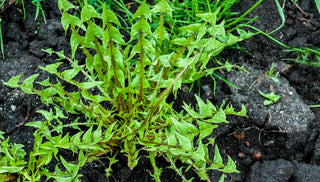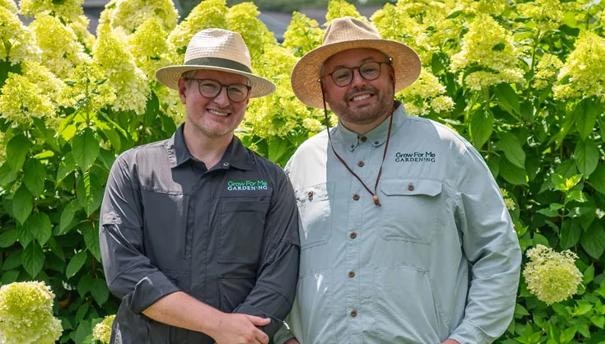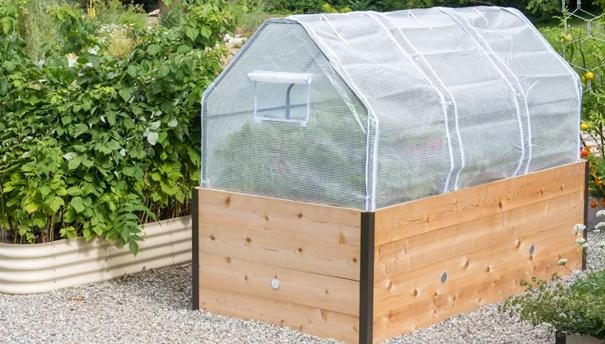 Wood sorrel (Oxalis stricta) may indicate moist, acidic, fertile soil. Photo: Suzanne DeJohn
Wood sorrel (Oxalis stricta) may indicate moist, acidic, fertile soil. Photo: Suzanne DeJohnI have read and heard for years that weeds can be good soil indicators and gardeners who understand what their weeds are saying can remedy soil problems accordingly. "Read your weeds," people often say. I never paid the idea much mind, to be honest. But last summer, after hearing that advice for what felt like the zillionth time, I decided to look into it.
It turns out that, although there is little hard science, there is a good deal of anecdotal evidence to support the belief that some weeds prefer certain types of soil and growing situations. Moss, as we all know, can be a good indication of poor drainage. But it can also be a sign of compacted soil or low fertility. So, "reading your weeds" isn't a foolproof way to evaluate your soil, but it can be a useful hint that something's going on below the soil surface. To find out what the weeds are really telling you, do a soil test to confirm nutrient levels and soil pH (acidity/alkalinity).
Here are some common weeds and what they may indicate about your soil.
Charts, Disclaimers and Common Sense
I can't say when people first started making connections between weeds and soil types, but Bud Markhart, a professor of organic horticulture at the University of Minnesota, helped me track down the chart from which all other weed/soil charts may have come.
Created by Ehrenfried Pfeiffer, a German soil scientist and biodynamic farmer, the chart first appeared in Pfeiffer's 1951 book, Weeds and What they Tell. As a follower of biodynamics, Pfeiffer, who died in 1961, took a holistic approach to soil management. In his chart he noted the relationships between certain weeds and soil types and then offered up possible responses.
For example, red sorrel (Rumex acetosella), docks (Rumex sp.), lady's thumb (Polygonum persicaria) and horsetail (Equisetum sp.) all indicate low pH. Pfeiffer suggested that gardeners could improve their soil by adding non-acidic organic matter, growing cover crops, improving drainage and/or adding lime. Unlike many of the sources for this type of information that I found during my research, Pfeiffer was careful to add a disclaimer: "This chart will help you learn to recognize and respond to what the weeds are trying to tell you. These recommendations are not absolute; they're just representative of common patterns. Don't rely on this or any book to guide you, but let these clues help lead you to the appropriate action for your specific situation."
How to Use the Information
None of the scientists I interviewed disagreed with the basic premise that, just by growing where they do, weeds can tell us a lot about soil type and conditions, such as drainage, nutrient deficiency and pH level. What's in question, says Robert Becker, a weed scientist and professor of agronomy at the University of Minnesota, is what to do with the information gleaned from the presence of certain weeds.
Becker advocates managing overall soil health rather than adding lime, sulfur or other things to remediate the soil conditions suggested by the weeds. He advises getting a soil test to see if your weeds are telling you an accurate story. Some weeds are simply opportunistic colonizers, for example, and are commonly found where the soil is tilled or disturbed frequently. Their presence in vegetable and flower gardens may just be the result of an abundance of seeds on open ground with little competition. Perennial weeds that invade lawns and other long-established areas may be stronger indicators of soil conditions, however.
Once you've confirmed your soil conditions with a soil test, you have two options.
- Grow plants suited to the soil you have.
- Take steps to amend the soil to better accommodate the plants you want to grow.
Got a site with a whole mess of hawkweed (Hieracium sp.) on it, indicating acidic soil? Either seize the opportunity to pluck out those unwanted invaders and replace them with acid-loving plants like blueberries, azaleas or hydrangeas. Or raise the soil pH by adding lime, according to the recommendations on your soil test results.
Troubled by burdock (Arctium minus) or chickweed (Stellaria media)?: Rejoice that you're fortunate to have naturally moist, rich soil. Pull up those invaders and fill their spots with vegetables that thrive in very fertile soil, such as broccoli, lettuce and squash. If you want to grow plants that prefer leaner soil, such as nasturtiums and some wildflowers, grow them somewhere else.
Like other folklore and hand-me-down anecdotes that contain a kernel of truth, reading your weeds is a tradition based on careful observations of nature. Combine the clues gleaned from the wisdom of the ages with the tools of modern science to accurately learn the whole story and determine what's best for the future of your soil and the plants you want to grow.
Weeds to Know
 Bindweed is often found in hard, compacted soil. When you pull it up, try to get as much of the root as possible. This weed is especially persistent.
Bindweed is often found in hard, compacted soil. When you pull it up, try to get as much of the root as possible. This weed is especially persistent. Garlic mustard (Alliaria petiolata) is usually found in moist, alkaline soil and especially in disturbed, open areas.
Garlic mustard (Alliaria petiolata) is usually found in moist, alkaline soil and especially in disturbed, open areas. White clover (Trifolium repens) grows in soil that may be moist and nitrogen-deficient. This weed has a dense root mass. To make sure you get it all out, use a tool to loosen the soil first.
White clover (Trifolium repens) grows in soil that may be moist and nitrogen-deficient. This weed has a dense root mass. To make sure you get it all out, use a tool to loosen the soil first. Dandelion (Taraxacum officinale) is a ubiquitous weed found in compacted and disturbed soils and wherever its seeds can reach the ground. When pulling, use a tool that gets the taproot out.
Dandelion (Taraxacum officinale) is a ubiquitous weed found in compacted and disturbed soils and wherever its seeds can reach the ground. When pulling, use a tool that gets the taproot out. Prostrate spurge (Euphorbia supine) is frequently found in compacted soil.
Prostrate spurge (Euphorbia supine) is frequently found in compacted soil. Purslane (Portulaca oleracea) thrives in disturbed, highly fertile soils.
Purslane (Portulaca oleracea) thrives in disturbed, highly fertile soils. Equisetum arvense) Grows in poorly drained soils and may indicate acidic soil.
Equisetum arvense) Grows in poorly drained soils and may indicate acidic soil. Broadleaf plantain (Plantago major) grows in soil that may be slightly acidic, but is probably disturbed, well-drained and lacking in nutrients.
Broadleaf plantain (Plantago major) grows in soil that may be slightly acidic, but is probably disturbed, well-drained and lacking in nutrients.



